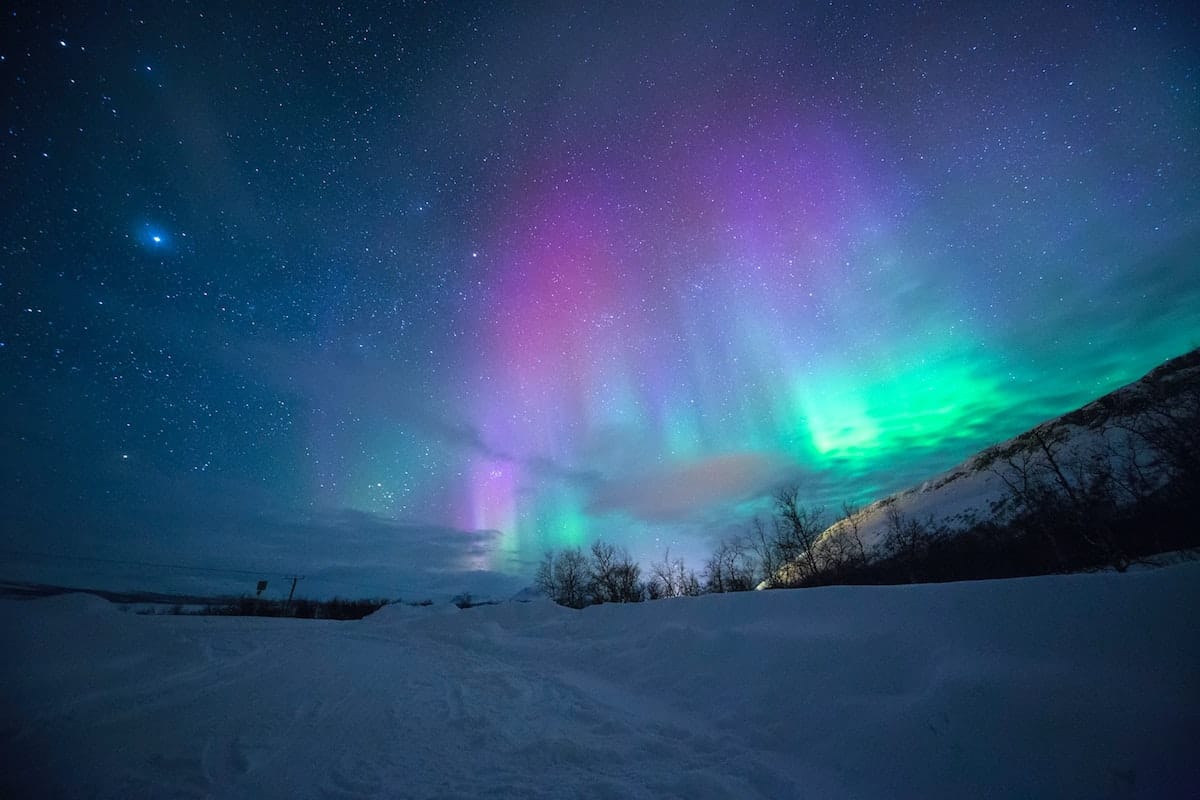Icefields Parkway: The most beautiful journey in the world
The journey through Banff National Park and Jasper National Park, linking Lake Louise and Jasper, is one of the most beautiful in the world. The post Icefields Parkway: The most beautiful journey in the world appeared first on A...

The journey through Banff National Park and Jasper National Park, linking Lake Louise and Jasper, is one of the most beautiful in the world. The Icefields Parkway, as it is known, is 233 kilometres of soaring mountain peaks, expansive icefields and endless valleys.
To drive it non-stop would take just under three hours. However, this is not a road to be consumed but an adventure to experience. Pass ancient glaciers, spectacular waterfalls, turquoise lakes and breathtaking forests as you move deeper into the remote wilderness. It will feel like you’ve left everything behind with no cellphone reception and only a lonely gas station along the way.
Natural beauty will encapsulate you like never before, so take it slow, stop at the viewpoints, hang onto your camera and soak up the splendour of the Canadian Rockies.

Lake Louise
We’d suggest starting this trip after a few days of exploring the pure mountain landscape that is Lake Louise. Famous for its turquoise lakes, towering mountain peaks, grand chateau and impressive hiking and skiing, it’s a place that will take your breath away. The sights and adventures are jaw-dropping and you have to experience them to believe it.
It would be wise to start the journey with a filled tank, plenty of snacks or a picnic basket, and a map of the area. With only one gas station along the way and few facilities, it’s best to be prepared.

Bow Lake
The first stop after Lake Louise is easily noticeable as it lines the Icefields Parkway. You can either stop along the road or take the turn-off to the parking area. Enjoy the stunning views and beautiful colour of the water.
Peyto Lake and Bow Summit
Peyto Lake is one of the most popular and photographed spots along the Icefields Parkway. The dazzling blue colour of the water is from the Peyto Glacier above the lake and part of the Wapta Icefield. The best viewpoint for the lake is from Bow Summit at 2088 metres above sea level. It is the highest point on the Icefields Parkway. The view is so spectacular you’ll feel as if you are stepping into a postcard.

Saskatchewan River Crossing
The Saskatchewan River Crossing is three rivers that meet; the North Saskatchewan, the Howse and the Mistaya. It was named “The Crossing” when fur traders and travellers used this point to cross the North Saskatchewan river on their way to British Columbia. The importance of The Crossing is that it is the starting point for tours in the Columbia Icefields area and it is also the only place to use restrooms, the gas station and restaurants along the route.
Weeping Wall
As the name suggests, the mountain looks like it is crying because many tiny waterfalls cascade off the cliffs creating this illusion. The main waterfall is even called the Teardrop. This is a shortstop and can be viewed from the side of the road. The best time to see the Weeping Wall is when it is frozen during the winter months. The entire cliff face gradually freezes into a beautiful blue wall of ice.

Big Hill and Big Bend
It will be clear to you when you arrive at Big Hill and Big Bend. At Big Hill, the descending road clings to the wall of a mountain and offers an expansive view of the valley, the river, and all the features that make the Icefields Parkway the most scenic drive in the world. The Big Bend is the famous hairpin turn that wraps in a circle below towering peaks. Keep driving and enjoy the stunning view.

Parker Ridge
This is the longest stop through the Icefields Parkway. In total, it’s a five-kilometre hike. If you’re not up for a hike, you can always skip it and continue on your way. The Parker Ridge is a must-do though for those who want a bit of elevation to take in a multitude of mountain ranges and the Saskatchewan Glacier. A big bonus is that you can find a nice spot along the way for a picnic lunch.
Columbia Icefield
These fields of ice that lie between Banff National Park and Jasper National park are the largest south of the Arctic Circle. They are 325 square kilometres in area, up to 365 metres in depth and receive up to seven metres of snowfall per year. During summer you can travel on the glacier in “snow-coaches” or you can view them from the roadside parking lot.

Glacier Sky Walk
Imagine standing on a glass-floored observation platform 280 meters above the Sunwapta Valley. This unique experience opened in May 2014 and gives you panoramic views of the valley. If heights are not your thing then you can still view the Sunwapta Valley from a lookout point nearby.
Athabasca Falls
You do not want to miss the Athabasca Glacier. One of the six principal ‘toes’ of the Columbia Icefield, it’s the most visited glacier in North America – and it’s huge. You can see it from the road, but it’s worth it to jump on the Athabasca Glacier trail to get almost right to its edge. If you want to hike onto the glacier you’ll need to book a tour with a proper guide for safety.

Jasper
Ranging over 11 000 square kilometres, Jasper is the largest national park in the Canadian Rockies. Known for its vast wilderness, majestic peaks, abundant wildlife and outstanding natural beauty, visitors from all over Canada and around the world travel here to experience this very special place.
The best times to visit Jasper National Park are March through May and September through November. The temperatures will be chillier but it’s a small price to pay for a quieter and less crowded park.

IMPORTANT NOTICE:
If you are reading this article anywhere other than on A Luxury Travel Blog, then the chances are that this content has been stolen without permission.
Please make a note of the web address above and contact A Luxury Travel Blog to advise them of this issue.
Thank you for your help in combatting content theft.
Winter wonderland
No drive is ever the same on the Icefields and that is especially true when the most beautiful journey in the world turns into a winter wonderland. During November and March, overwhelming tranquillity settles in on the Icefields Parkway as it transforms into a place of solitude and awe. Roadside stops reveal ancient glaciers and cascading waterfalls. Snow-covered trails tempt you to pull over and put on snowshoes or skis for a winter adventure.
Best photos
Every moment spent on the Icefields Parkway offers stunning opportunities to capture the perfect photo. Below are some highly recommended photography spots.
Lake Moraine
Peyto Lake
Waterfowl Lakes
Bridal Veil Falls
Parkers Ridge
The Columbia Icefield
Sunwapta Falls

The Icefields Parkway is more than a drive, it’s the most beautiful journey in the world and it deserves discovery. Take your time, soak up the sheer expanse of nature and immerse yourself in the experience.
Andrew Morten is the Founder of Little America. Little America creates bespoke, tailored trips to the United States and Canada.
If you would like to be a guest blogger on A Luxury Travel Blog in order to raise your profile, please contact us.

 Koichiko
Koichiko 































